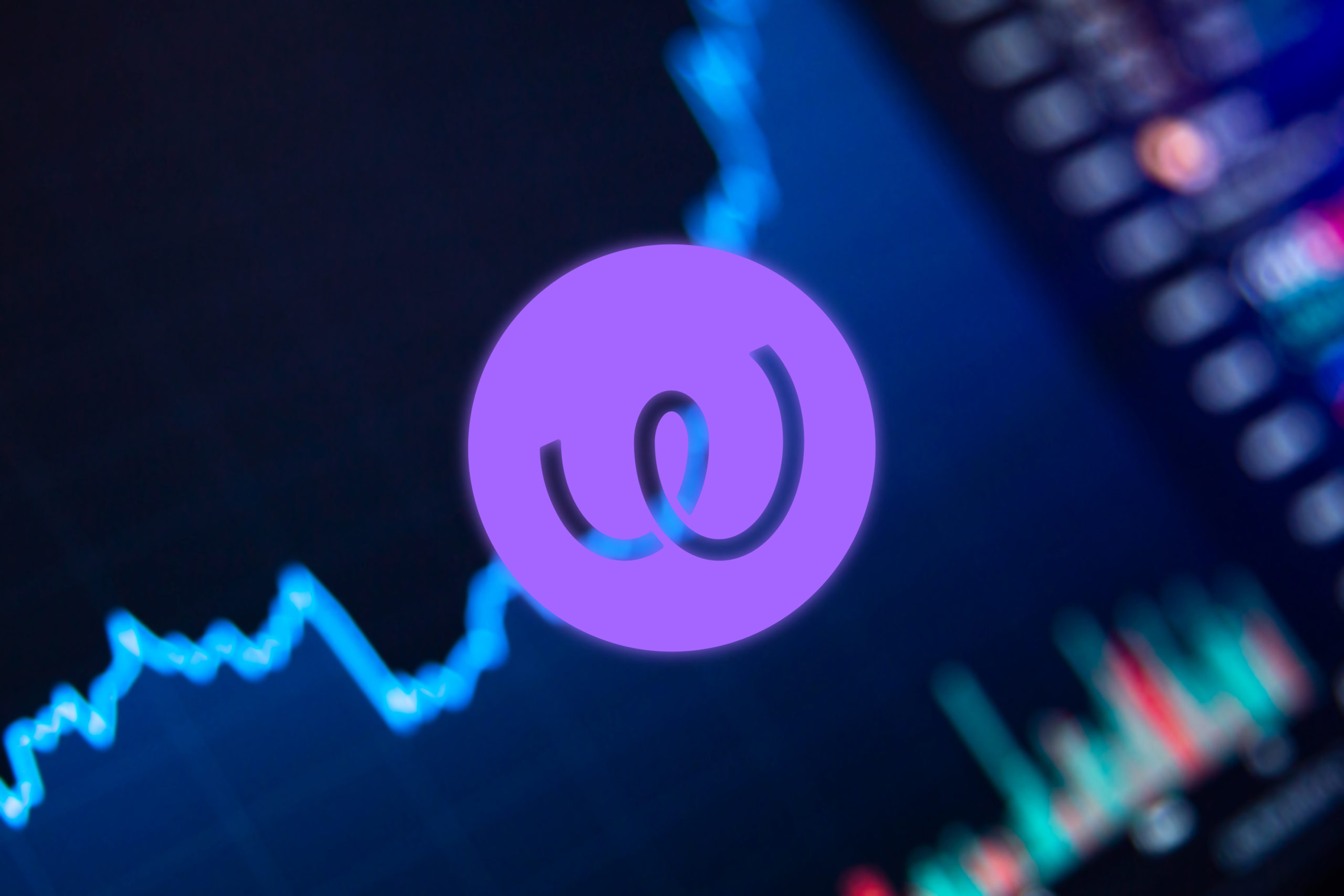A 50-100x powerhouse in the making.

The major overhaul in energy and communication systems worldwide brings about plenty of technological change, paradigm shifts and innovation.
With a push for cleaner forms of energy, whether renewable or nuclear (a different topic), comes the discussion surrounding its production (sourcing) and distribution.
As per the latter, I see massive potential in the role of distributed ledger (e.g. blockchain) technology in promoting (small-scale) microgrids with an emphasis on peer-to-peer (or, in this case, point-to-point) trading.
Today’s project and crypto in focus are Energy Web and EWT, respectively. The former is positioned to play a key role in aiding companies to adopt solutions to reduce their carbon footprint by embracing clean energy and carbon markets with the power of blockchain tech.
This not-for-profit, based in Zug, a.k.a. Switzerland’s Crypto Valley, aims to create and deploy open-source Web3 products that allow companies to benefit from clean and distributed energy systems.
Three significant aspects of EW include:
– Green proofs
– Data exchange
– Asset management
Green proofs
Businesses providing a particular good or service can make claims about how “green” they are, whether energy-related, packaging, how food is grown, and so on. However, this requires consumers to trust third-party certification bodies (or, in some cases, plain-old self-regulation) about the true origins of goods and services.
With effective marketing, many consumers fall for greenwashing claims hook, line and sinker. This is why I believe Energy Web will play a crucial role in cutting through the BS and allowing users to track and verify energy generation data in real-time via the entity’s 24/7 Green E-Mobility Platform.

Source: Energy Web media kit.
Once X amount of energy is used, a smart contract is executed onto Energy Web’s testnet, Volta, which subsequently produces an NFT, acting as a renewable energy certificate (REC), displaying relevant electricity generation data for users.
Who is exploring and using the technology on offer? Volkswagen is a major player showing a keen interest in this, which I will expand on in the News and Partnerships section below.
Whilst generation and consumption information is updated every 15 minutes, as it becomes more advanced, I expect this to update in even shorter intervals with time, thus presenting even more accurate data than what is currently available.
Other than EVs, green proofs can be applied to verify electricity provenance for renewable energy in electricity markets, more eco-friendly Bitcoin mining (more on this shortly) and the aviation sector, with a push for sustainable aviation fuel in the coming years.

This image should also factor individual power generation (residential) feeding back into a grid, not to mention the role of EV batteries in returning electricity to a grid (vehicle-to-grid technology).
Source: VectorMine on Shutterstock
Data exchange
This helps to overcome the challenges (i.e. lack of feasibility) to readily accommodate the growing list of P2P stakeholders in energy networks, notably small-scale (residential) energy generators, aggregators and regulators, to name a few.
EW Data Exchange facilitates information flow and processing between various players, avoiding the need for a central entity. Energy Web claims it can work on “any protocol, any use case, all with a single integration”.
Transportation, stationary energy and other related sectors allow EW to cover a broad range of use cases in an essential industry, with the added advantages of lower ongoing costs and enhanced security through a distributed messaging and storage infrastructure; more info is available here.
Asset management
This component covers EW’s Asset Management to provide immutable and powerful audit trails to verify every step across an asset’s life cycle and accurately monitor the operating status and access authorisation for numerous devices across a distributed network.
Moreover, EW’s AM is designed to further improve remote hardware patch management and supply, oversee and even withdraw credentials for internal and external users.
Conventional electricity networks and other centralised sets of utility networks need enhanced security measures to reinforce their systems, particularly from the risk of cyber-attacks, state-sponsored or otherwise.
The move towards smart grids and the proliferation of connected devices (Internet of Things), EVs and microgrids pose their own security challenges, including a greater number of overall participants in energy networks (i.e. small-scale energy producers), so all of these things need to be factored in when dealing with related security challenges.
Energy Web encourages prospective partners to schedule a demo and see first-hand how their abovementioned products work across various use cases.
Energy Web news and partnerships
As I alluded to earlier, Volkswagen Group Innovation, an R&D arm behind the automotive behemoth, has taken an active interest in blockchain technology’s role in running EV charging infrastructure, according to a Medium article from Energy Web in March 2021 covering this collaboration.
In a press release last July, Blackrock, the world’s largest fund manager, praised Energy Web’s efforts to improve sustainability in bitcoin mining and hosting operations.
Deutsche Energie-Agentur (DENA), Germany’s national energy agency, selected EW to plan and develop an online registry for distributed energy resources nationwide, which features 20 industry participants. With neighbouring Austria using EW’s service to assist its power grid, I sense colossal potential here as part of energy management for the fourth-largest single economy in the world.
Sticking with Germany, another notable collaboration is EW’s work with multinational energy storage provider sonnen Group, which is making use of EW’s Origin software development kits (SDKs) to operate a virtual power plant.
Besides the energy sector, Energy Web is working with IoT-related companies, Kore and Kigen, to develop an open-source, SIM-based system involving the latter’s IoT SAFE system to enhance security in the IoT realm by employing SIM cards as a secure hardware element as part of chip-to-cloud security.
A key benefit of this scheme is to allow users (primarily aimed at companies) to have greater control over the SIM cards on their devices, which is still mostly controlled by network operators.
Full details about what this all entails are available here.

Photo by Jakob Owens on Unsplash
Saving the best collab till last here — (Royal Dutch) Shell, IT and consulting powerhouse Accenture, and American Express, announced a partnership with Energy Web to carry out a blockchain-based book-and-claim scheme to order sustainable aviation fuel (SAF) for business flights, referred to as the Avelia platform.
I consider this one the most significant out of all featured here, regarding the global clout of Shell, Accenture and AMEX.
With a push to decarbonise the aviation industry, the anticipated growth of sustainable aviation fuels for both conventional civil aircraft and proposed next-generation supersonic passenger planes (e.g., Boom Supersonic), and rising levels of affluence around the world fuelling (pardon the pun) the demand for more international flying, SAFs will become increasingly relevant.
Schemes such as green proofs (EW or otherwise) will be in high demand as discerning consumers and businesses seeking to bolster their ESG credentials will seek verified data about the origins of SAF, let alone any reportedly eco-friendly product.
Energy Web and Bitcoin mining
What measures are Energy Web taking to reduce carbon emissions associated with Bitcoin? By assessing RECs and Guarantees of Origin (i.e., which power source was used to provide electricity), they are working on a certification system to determine how “sustainable” Bitcoin miners actually are; this will be a valuable resource for multiple stakeholders to see how trustworthy a company’s “green” claims are.
https://www.energyweb.org/enterprise-members/
https://www.energyweb.org/projects/
This will become increasingly important as the Bitcoin mining companies continue investing in cleaner forms of energy to power mining equipment. Whilst the majority (~60%) comes from sustainable sources (my thoughts about this in a recent article), there will still be a push to get this figure towards 100%. Remember that as Bitcoin’s hash rate increases, energy requirements will also go up (even when accounting for more efficient hardware).
Concluding thoughts
To summarise, Energy Web’s focus goes well beyond the idea of microgrids and P2P energy; I see enormous potential here in this space for various reasons:
– blockchain technology will play a pivotal role in facilitating the use of P2P trading, with automated processes (e.g. smart contracts) keeping costs down and avoiding the need for an intermediary/third party;
– With its suite of decentralised services, applications and types of blockchains being utilised here across the technology and utilities sectors, not to mention hitting several milestones since its inception in 2017, it is well-positioned to assist companies, regulators and consumers in managing the anticipated shift in energy trends, especially greater electrification and shift to greener fuel sources across the entire world.
– From a humanitarian perspective — Over 750 million people globally still lack access to (reliable) electricity. Whilst this has come down over the past ten years, progress has stagnated, particularly since early 2020.
This begs the question, how practical (and likely) is it for developing economies to bypass extensive (and thus expensive) infrastructure networks and opt for microgrids? Sounds ambitious, but bear in mind that a similar phenomenon occurred over the past 15-20 years with the technological leapfrogging of telecommunications systems (i.e., opting for cellular/wireless tech versus landlines).
I remain optimistic, as I expect that related crypto projects, their coins/tokens and investors will not only benefit from individuals and communities gaining access to electricity where it’s currently lacking but also reap the rewards from those in developed countries making a transition to distributed energy systems that utilise blockchain technology.

Source: Getty Images, via Unsplash+
I am excited about the anticipated energy transition that’s taking place, particularly a system that encourages greater autonomy and more P2P trading to bypass a centralised system of energy companies, not to mention the costs involved in maintaining poles and wires with this setup.
Besides this, incorporating blockchain/DLT in the process to help power community microgrids is the cherry on top, and I hope many others embrace this technology, too, in the process.
Besides Energy Web Token (EWT), I have also covered Powerledger (POWR) in video and written formats, something which, I believe, will also do well. With less than $250 million in circulating market cap, this small-cap crypto has plenty of growth potential, but as always, you need to track the competition in this space to see who can lock in massive, sustained partnerships in the coming years.
How to keep informed and stay in touch with Energy Web/EWT news:
- Official website and news page
- EWT price tracker
- Medium
- YouTube
- Discord
- Telegram
Notable mention to Jay Shick for bringing EWT to my attention; thank you.
Disclaimers
N.B. None of this is financial advice, and I am not a financial advisor. You are solely responsible for crypto investments, let alone those in any asset class.
The opinions expressed within this piece are my own and might not reflect those behind any Energy Web or any other entity listed here.
Please do your research before investing in any crypto assets, staking, NFTs and other product affiliated with this space.
EWT accounts for less than 0.5% of my crypto portfolio, so its performance will have little impact on my overall holdings, regardless of how it performs.
I received no incentive from companies or entities listed throughout this article to discuss their product.
If you enjoyed this article, I recommend following my Medium page for regular reports about crypto assets, blockchain technology, and more. Feel free to check out my publication as well, Crypto Insights AU.
Thanks for your support.
Featured image by Ivan Babydov on Shutterstock
